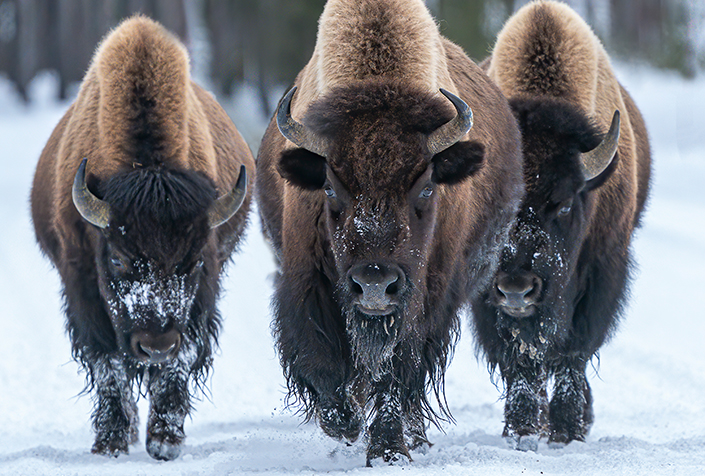Study: All bison in North America may share ancestry with domestic cattle

A new study published in Scientific Reports has revealed the strongest evidence to date that all bison in North America carry multiple small, but clearly identifiable, regions of DNA that originated from domestic cattle.
In the study, Texas A&M College of Veterinary Medicine & Biomedical Sciences researchers, led by James Derr and Brian Davis, compared genome sequences among the major historical lineages of bison to 1,842 domestic cattle, establishing that all analyzed bison genomes contained evidence of cattle introgression.
This shared genetic ancestry is the result of multiple hybridization events between North American bison and cattle over the last 200 years, which followed the well-documented bison population crash of the 1800s.
“This comparative study clearly documents that the people responsible for saving the bison from extinction in the late 1800s are also responsible for introducing cattle genetics into this species,” Derr said.
This study updates findings from a series of studies published 20 years ago, in which Derr’s team revealed that only a few bison herds existed that appeared to be free of domestic cattle introgression. Now, with better genetic technology, these researchers have shown that even those herds are not free from hybridization.
“Today, it appears that all major public, private, tribal, and non-governmental organization bison herds have low levels of cattle genomic introgression,” said Sam Stroupe, a doctoral student in Derr’s lab and first author of the study. “This includes Yellowstone National Park, as well as Elk Island National Park in Canada, which were thought to be free of cattle introgression based on previous genetic studies.”
Derr said that these new findings will once again have ramifications for bison conservation efforts and long-term conservation planning since certain herds will no longer need to be managed in isolation. “For example, these findings really open up a number of opportunities for the establishment of new bison conservation herds and the augmentation of existing herds.”

